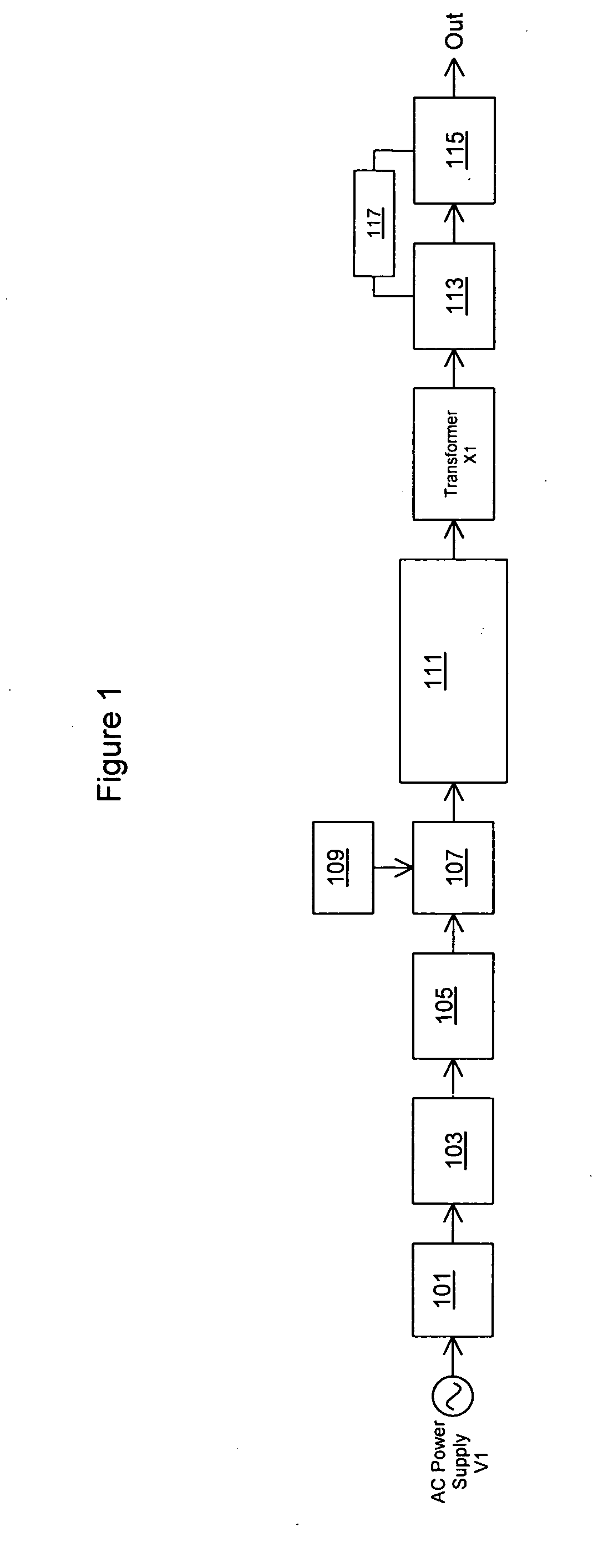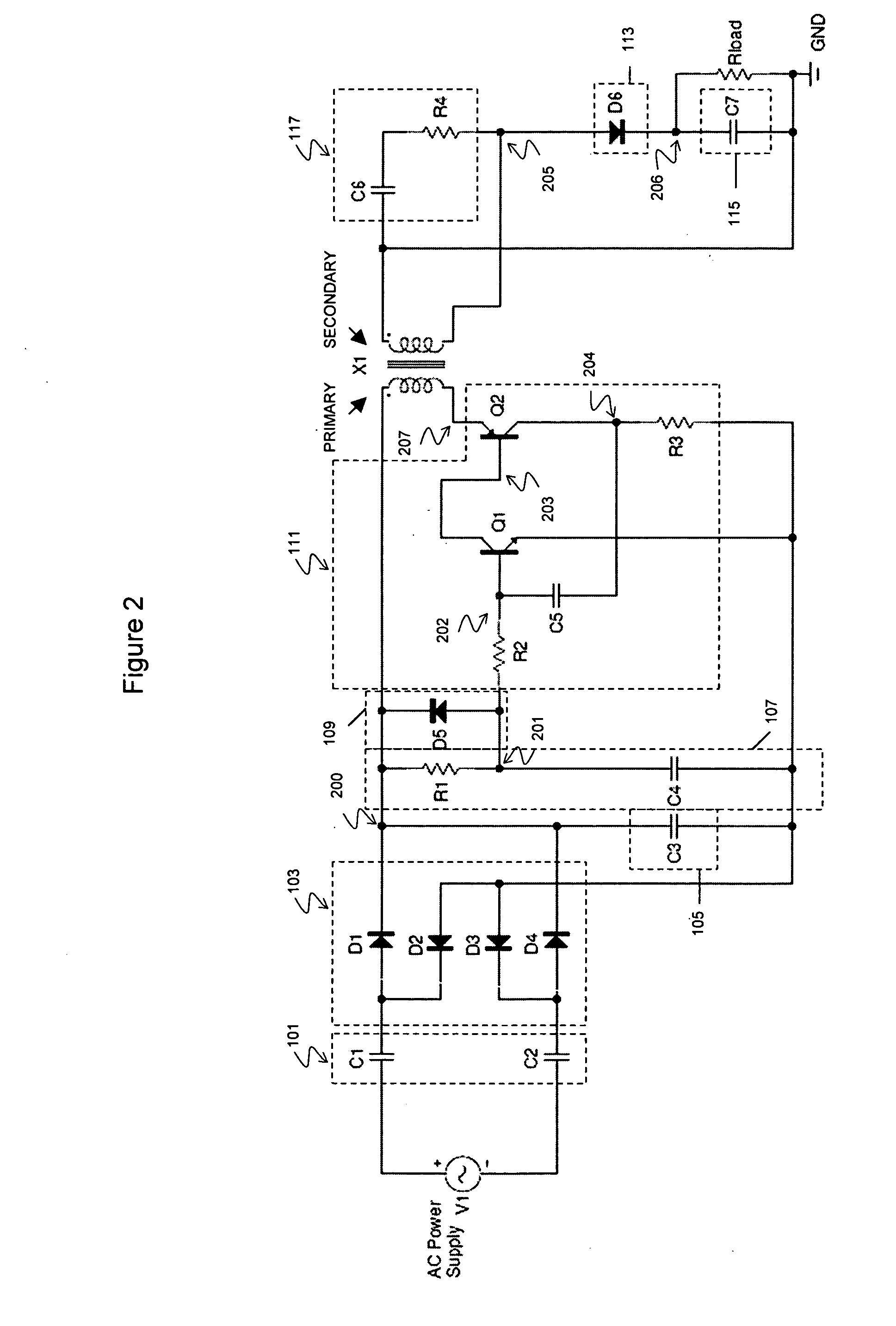Power supply
a power supply and power supply technology, applied in emergency power supply arrangements, process and machine control, instruments, etc., can solve the problems of increased resistance, increased losses, and impracticality of transformers
- Summary
- Abstract
- Description
- Claims
- Application Information
AI Technical Summary
Benefits of technology
Problems solved by technology
Method used
Image
Examples
first embodiment
[0107]FIG. 1 is a block diagram of the invention and FIG. 2 shows a circuit implementation of that embodiment.
[0108] Referring to FIGS. 1 and 2, the input is AC power supply V1. The AC power supply may be any AC voltage at any frequency e.g. 110 VAC, 120 VAC, 230 VAC or 240 VAC at 50 or 60 Hz. The AC power supply V1 is connected to a current limiter 101 comprising two capacitors C1 and C2. As will be described, the power consumption may be controlled by changing the value of those capacitors. The AC signal is then rectified by rectifier 103 formed by four diodes D1, D2, D3 and D4. Note that the rectifier is a full-wave rectifier providing a DC output voltage with two maxima per AC cycle. Capacitor C3 acts as voltage limiter 105 to limit the voltage at node 200 in order to prevent the breakdown of the device due to exceedingly high voltages. If the circuit elements have a high breakdown voltage i.e. above the maximum of the AC supply peak voltage, then capacitor C3 may be omitted. Ca...
second embodiment
[0129]FIG. 8 is a block diagram of the invention and FIG. 9 shows a first circuit implementation of that embodiment.
[0130] It can be seen that the second embodiment illustrated in FIG. 8 is the same as the first embodiment except for the addition of regulator 119. That is, in summary, the arrangement includes AC power supply V1 , current limiter 101 (effected by two capacitors C1 and C2), rectifier 103 (effected by four diodes D1, D2, D3 and D4), voltage limiter 105 (capacitor C3), RC timer 107 (effected by resistor R1 and capacitor C4) and timer reset 109 (diode D5) for switch 111 (effected by transistors Q1 and Q2, resistors R2 and R3 and capacitor C5), transformer X1, rectifier 113 (diode D6), filter 115 (capacitor C7) and optional snubber circuit 117 (effected by capacitor C6 and resistor R3).
[0131] The arrangement additionally includes regulator 119. The function of regulator 119 is to reduce the fluctuation of the DC voltage at the output (node 206) to the load. This is impor...
PUM
 Login to View More
Login to View More Abstract
Description
Claims
Application Information
 Login to View More
Login to View More - R&D
- Intellectual Property
- Life Sciences
- Materials
- Tech Scout
- Unparalleled Data Quality
- Higher Quality Content
- 60% Fewer Hallucinations
Browse by: Latest US Patents, China's latest patents, Technical Efficacy Thesaurus, Application Domain, Technology Topic, Popular Technical Reports.
© 2025 PatSnap. All rights reserved.Legal|Privacy policy|Modern Slavery Act Transparency Statement|Sitemap|About US| Contact US: help@patsnap.com



